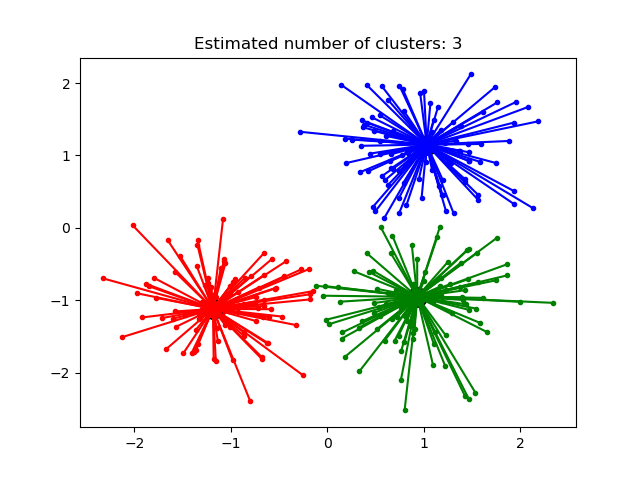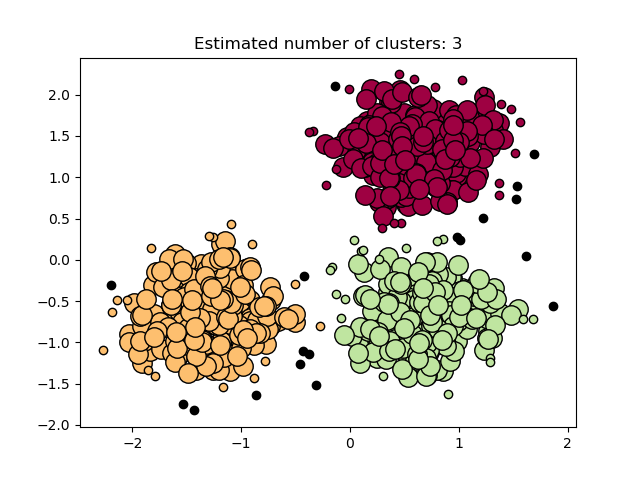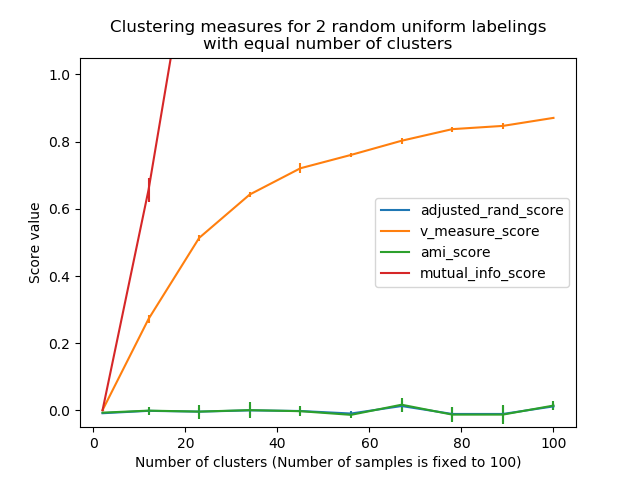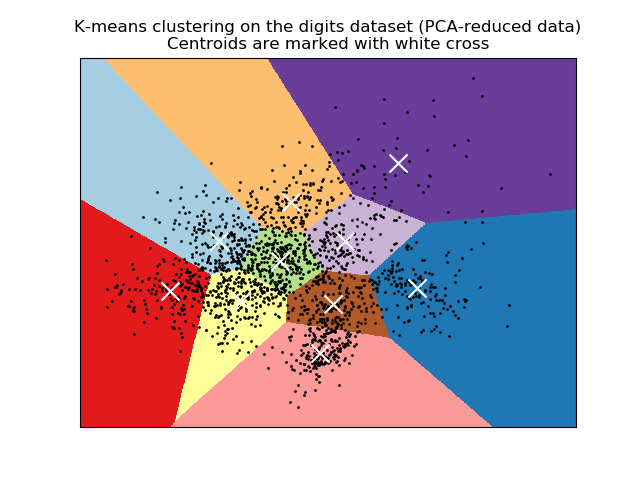sklearn.metrics.adjusted_mutual_info_score?
sklearn.metrics.adjusted_mutual_info_score(labels_true, labels_pred, *, average_method='arithmetic')
調整兩個群集之間的相互信息。
調整互信息(AMI)是對互信息(MI)分數的調整,以考慮機會。這說明了這樣一個事實,即對于具有大量群集的兩個群集,MI通常更高,而不管是否實際上共享了更多的信息。 對于兩個聚類U和V,AMI表示為:
AMI(U, V) = [MI(U, V) - E(MI(U, V))] / [avg(H(U), H(V)) - E(MI(U, V))]
此指標獨立于標簽的絕對值:類別或簇標簽值的排列不會以任何方式改變得分值。
此度量很對稱:將label_true與label_pred對調將返回相同的得分值。當未知真實值時,這對于測量兩個獨立標簽分配策略在同一數據集上的一致性很有用。
請注意,此功能比其他指標(例如蘭德調整指數)慢一個數量級。
在用戶指南中閱讀更多內容。
| 參數 | 說明 |
|---|---|
| labels_true | int array, shape = [n_samples] 數據聚類成不相交的子集。 |
| labels_pred | int array-like of shape (n_samples,) 將數據聚類成不相交的子集。 |
| average_method | string, optional (default: ‘arithmetic’) 如何在分母中計算歸一化。可能的選項是‘min’, ‘geometric’, ‘arithmetic’, 和 ‘max’。 0.20版中的新功能。 在0.22版中進行了更改:average_method的默認值從‘max’變為‘arithmetic’。 |
| 返回值 | 說明 |
|---|---|
| ami | float (upperlimited by 1.0) 當兩個分區相同(即完全匹配)時,AMI返回值1。隨機分區(獨立標簽)的預期AMI平均約為0,因此可以為負。 |
另見:
蘭德調整指數
互信息(未經調整)
參考
2 Wikipedia entry for the Adjusted Mutual Information
示例
完全標簽既均勻又完整,因此得分為1.0:
>>> from sklearn.metrics.cluster import adjusted_mutual_info_score
>>> adjusted_mutual_info_score([0, 0, 1, 1], [0, 0, 1, 1])
...
1.0
>>> adjusted_mutual_info_score([0, 0, 1, 1], [1, 1, 0, 0])
...
1.0
如果類成員完全分散在不同的群集中,則分配完全不完整,因此AMI為空:
>>> adjusted_mutual_info_score([0, 0, 0, 0], [0, 1, 2, 3])
...
0.0




